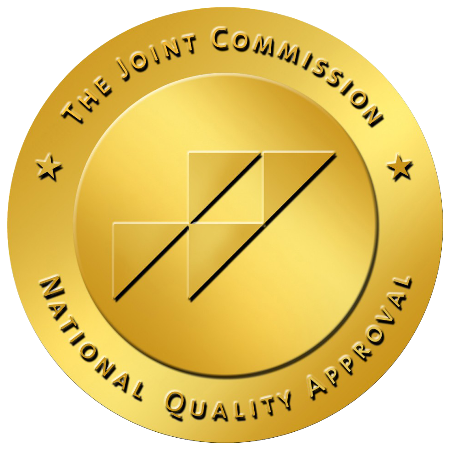What Are the Relapse Rates for Addiction?

Addiction is like a long-lasting sickness, just like heart trouble or asthma. Substance use disorders are a chronic condition that needs ongoing care. Just like chronic conditions, drug addiction has a similar chance of coming back, known as a relapse.
The National Institute on Drug Abuse (NIDA) says that 40 to 60 percent of people might face relapse and full-blown addiction all over again after trying to get better. Studies show that 85% of relapses happen in the first year after treatment.
But remember, this also means a large percentage of people achieve long-term sobriety for a long time. Understanding why people relapse, and learning strategies for maintaining a healthy, addiction-free life increases the likelihood of long-term sobriety. This will help you stay better for longer.
Getting over addiction is a journey that lasts your whole life. Some people do well right away, while others might struggle with parts of the recovery process.
Everyone’s path to getting better is different. No one wants to go back to drugs or drinking, but it can happen. The most important part is how you handle going back to addiction. If you keep trying to stay away from drugs and keep working on getting better, you’re not failing.
What Is Relapse?
Relapse means using drugs or alcohol again after being sober. Relapse is not just a simple act because relapse is not a sudden decision. It often develops gradually, leading to the return of drug or alcohol use.
Sometimes, people experiment with new substances, believing they can manage them. However, addiction makes it hard to control substance use.
In treatment and family therapy, the person with addiction and their loved ones learn to spot early signs of a relapse. The earlier you notice these signs, the better the chances of stopping a relapse from happening.
What Causes Relapse?
Relapse happens not because of one reason or decision. It comes from a mix of thought patterns and actions and not focusing on recovery.
Factors that can lead to relapse include:
- Challenging or traumatic experiences when stopping use
- Not having skills to deal with problems
- Not taking care of oneself
- Not handling stress well
- Not having people to support you
- Skipping support groups, 12-step programs, or therapy
- Not dealing with things that trigger you
- Big changes in life
- Going through trauma
- Not taking care of other mental health issues
- Trying old habits to see if you can resist
Many relapses happen during early detox or a few months after treatment. People trying to quit drugs or alcohol on their own may struggle with withdrawal symptoms and cravings, leading them back to using substances. Also, cravings and habits that lead to addiction take months or even years to fade, especially without professional help.
People can also relapse after many years of being sober, often because of overconfidence. They might not remember that staying sober is a continuous effort in recovery. Just like someone with a heart condition can’t stop their medication, a person in recovery can’t stop working on staying sober.

Drug with Highest Relapse Rate
Alcohol and opioids show the highest rates of relapse, followed closely by stimulants, particularly methamphetamines, or meth. These numbers are also closely connected to the high rates of addiction seen with alcohol, opioids, and meth. When a drug is widely abused, more people tend to go back to using it.
Alcohol Relapse Rates
According to the National Institute of Health (NIH), in the first year of stopping heavy drinking, up to 80% might drink again. About half to the total 80% return to drinking because they don’t get expert addiction treatment help.
If someone doesn’t drink for a year, the chance of drinking again drops to 21%. After three years without alcohol, the risk falls to less than 10%. The longer someone stays away from alcohol, the less likely they’ll start drinking again. Not drinking for over five years dramatically reduces the chance of starting again.
Opioid Relapse Rates
After the first year after treatment, the NIH claims that about 85 to 90% of people with opioid problems might use opioids again. Those who didn’t get full treatment after stopping opioids are 2.5 times more likely to use them again.
These high numbers are because opioids change the brain and make people crave them. This shows why it’s important to have treatments that change behavior and ways to stop using opioids again for this kind of drug problem.
Heroin Relapse Rates
Heroin relapse rates are close to those of other opioids. In the first year after getting help, 72 to 80% of people might use heroin again. Those who got help from experts for their heroin problem had a lower chance, with about 32 to 70% going back to using it.
Also, some people who used to take prescription opioids start using heroin after their treatment. These people are sometimes seen as new heroin users, so the numbers can be different.
Meth Relapse Rates
After the first year of meth addiction treatment, about 61% of people relapse. But, if someone stays meth-free for a year, their chance of relapse drops to 25%.
Studies found two main things in common among people who did and didn’t relapse on meth. Those who had medical help during withdrawal and kept getting cognitive-behavioral therapy (CBT) after their treatment were more likely to stay sober for a long time.

Relapse Prevention Therapy
If you’re finding it hard to stay away from alcohol or drugs or simply looking for help for the first time, Northridge Addiction Treatment Center can help. Compassionate and experienced medical staff can assist you in dealing with the direct effects of addiction and plan a sustainable recovery for you.
Research shows that a safe and well-handled experience of addiction recovery can lower the chances of relapse. We offer medical detox right here with 24-hour medical care and support. This helps you start your journey in our live-in treatment center on a positive note.
Our skilled, licensed, and accredited team works with you to make a treatment plan just for you. We use proven treatment programs to help you keep up your recovery over time. You’re with us for life once you become part of the Northridge family.
Call now to talk to a qualified treatment expert and start a life focused on strong and meaningful recovery. Your path to recovery is only a phone call away.
Find Meaningful Recovery
Our caring and compassionate specialists are eager to help you comfortably navigate this journey to recovery. Our individualized treatment plan, programs, and therapies may be a perfect match for you or your loved one. Let us assist you in living the happy life you deserve. It starts with a phone call.




